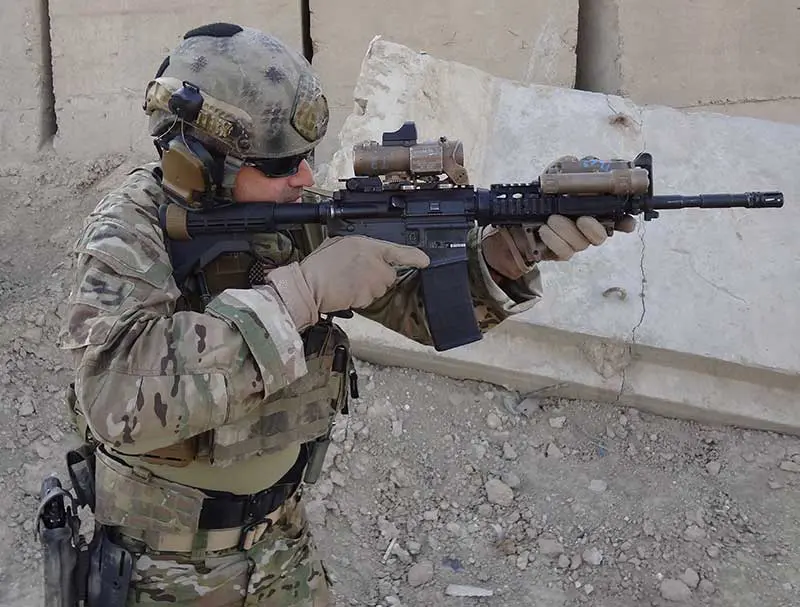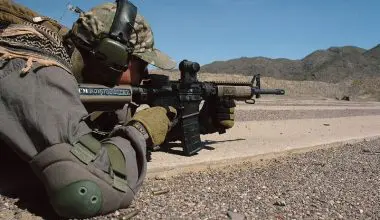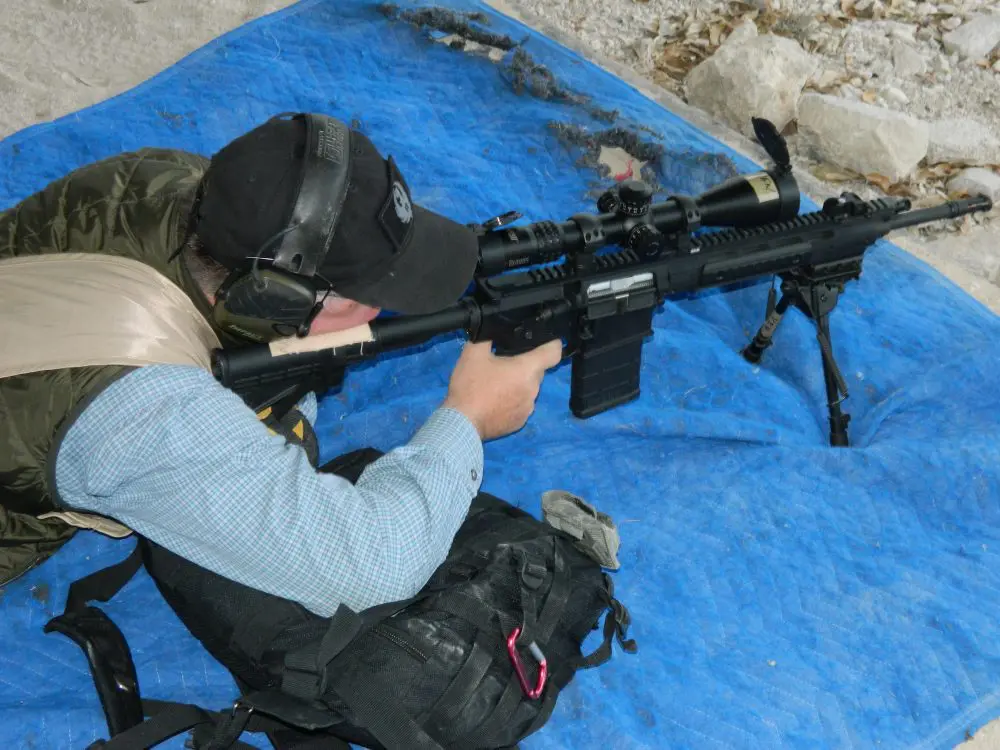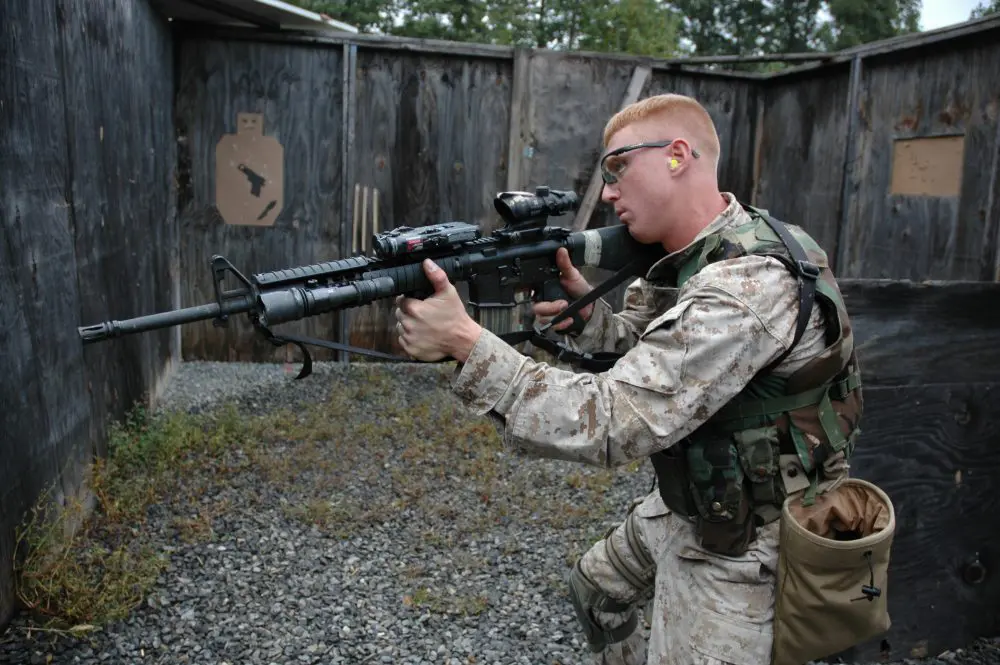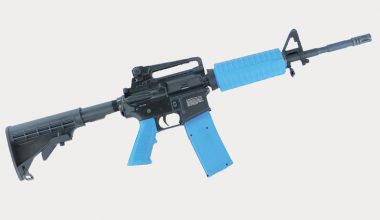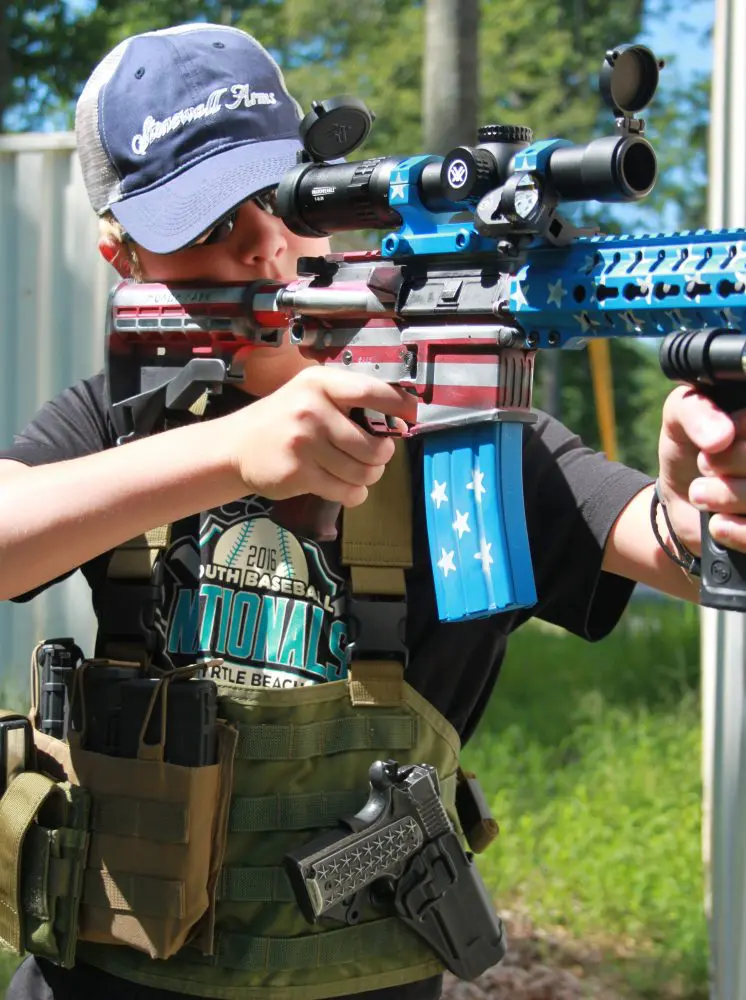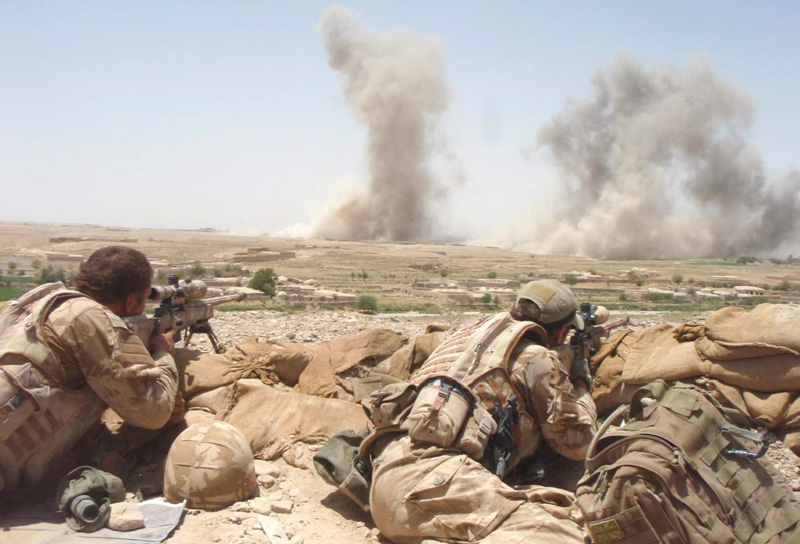
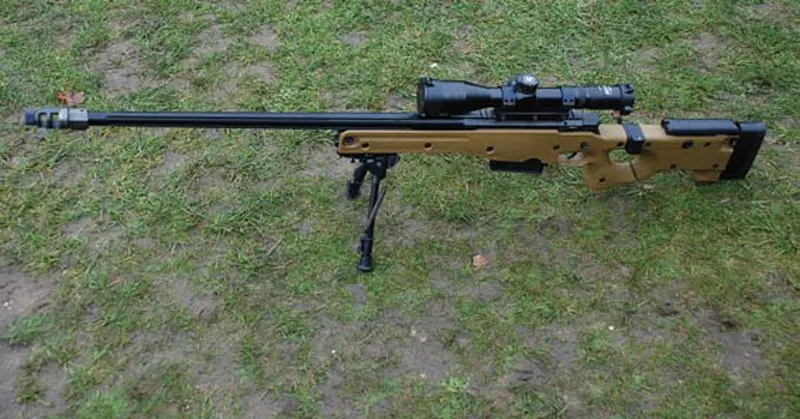
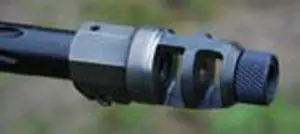
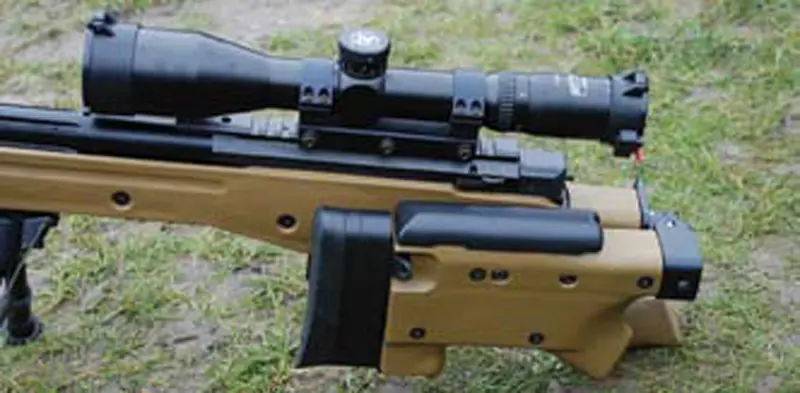
The AWM rifle is chambered for the .300 Winchester Magnum and .338 Lapua Magnum cartridges. Based on the Arctic Warfare rifle, the AWM has dimensional changes to accommodate the longer length cartridges. The detachable box magazine will take five rounds.
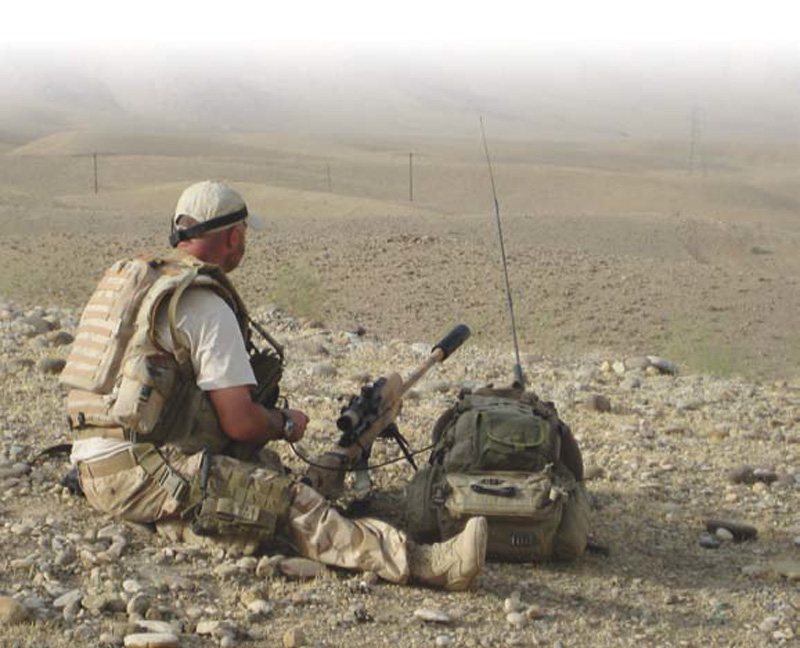
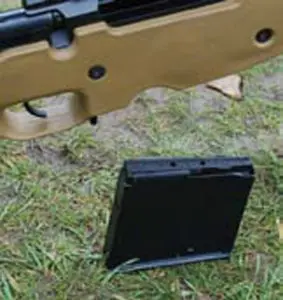
Table of Contents
WINCHESTER MAGNUM
The .300 Winchester Magnum (Win Mag) offers a flatter trajectory and increased wind resistance and maintains supersonic velocity to a greater distance than the 7.62mm NATO (.308 Winchester) cartridge. Using match ammunition, the 26-inch barreled .300 Win Mag can offer first-round hit probability out to 1,100 meters. The standard factory loading for the .300 Win Mag utilizes a .30-caliber 180-grain full metal jacket (FMJ) bullet with a muzzle velocity of 2,975 feet-persecond (fps).
The AWM-F (folding stock) in .300 Win Mag was chosen by the German Army as their new sniper rifle in 1998. Designated the Scharfschutzengewehr G22, this rifle has been supplied as a customized version, with the addition of a “tool-less” adjustable butt and cheek piece. A support spike has been added to the butt. The height of the spike can be set to allow the user to view a target area without the discomfort of having
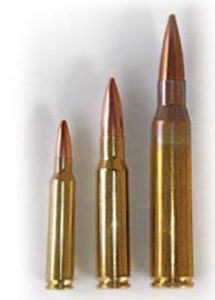
to support the rifle. A bracket to which a “look through” night sight is attached has been fitted to the forend. This is used in conjunction with the daytime telescopic scope to provide the user with night vision capability.
LAPUA MAGNUM
The .338 Lapua Magnum (LM) cartridge was designed as a long-range sniping system with performance to “fit between” the .308 Winchester and .50 Browning Machine Gun (BMG). The .338 LM will reach out farther and hit harder than the .308 Winchester but has less recoil, muzzle flash and noise, and rifle weight than the .50 BMG. The .338 LM has less energy than the .50 BMG, but will equal it in trajectory, wind resistance and penetration.
Different types of factory ammunition are available. The standard load is a 250- gr. FMJ bullet with a muzzle velocity of 3,000 fps. A 27-inch fluted barrel gives the best combination of velocity and accuracy.
In 1996, Finnish ammunition company Lapua co-developed the .338 LM from the .338/.416 Rigby wildcat round in conjunction with Accuracy International (AI). The request came from the U.S. Navy SEALs, who wanted a round for a sniper rifle with more hitting power than the .308 Win and more maneuverability than a .50 BMG rifle for long-range sniping.
The original .416 Rigby round was developed as a caliber for use against dangerous game such as Cape buffalo, lion, and elephant. The original brass cartridge case was not robust enough to handle the pressures generated by the new loads developed by Lapua, so a new cartridge case was also developed. With the new loads, AI modified the receiver of the AW to allow for the longer length of the .338 LM.
First military sales of the .338 LM AWM were to the Dutch Armed Forces.
UK armed forces also realized the requirement for a large-caliber, man-portable rifle. Several manufacturers submitted their version of a Long Range Large Caliber Rifle (LRLCR) for trial and evaluation.
AI submitted their AWM in .338 LM. Also submitted were the French Hecate and the American Barrett, both in .50 BMG. A team from the Infantry Trials and Development Unit (ITDU) spent nearly a year testing the submissions in various climatic conditions that would mirror the conditions found in any operational deployment.
During the ITDU trial, soldiers used a battle range of 800 meters, engaged man-sized targets out to 1,200 meters and vehicles out to 1,500 meters. Ammunition types available included FMJ, armor piercing and armor piercing incendiary. The AWM was fitted with a Schmidt & Bender 3–12X50mm objective lens PMII telescopic sight for day use and a Simrad 200 series infrared sight for night use. This rifle was fitted with a folding buttstock to make it more compact during transportation.
The decision was made to select the AI AWM in .338 LM. Some 100 rifles were purchased and given the military nomenclature L115A1. These rifles were used by the Joint Rapid Deployment Force spearhead units and issued at platoon level to the unit’s best shots. This was a major asset to any platoon commander, enabling him to engage targets that were well beyond the range of the SA80 rifle and light support weapons, especially if he was without mortar or artillery support. It would have also enabled the units to tackle dug-in targets beyond the penetration capabilities of 5.56mm NATO ammunition.
SNIPER RIFLE SNIPER SYSTEM IMPROVEMENT PROGRAM
In 2008, the UK Ministry of Defence introduced the Sniper System Improvement Program, which included the AI AWM 338 LM (now designated the L115A3) with folding buttstock, adjustable cheek piece, Schmidt & Bender PMII 5-25X56 scope, threaded muzzle brake, suppressor, Harris Bipod, and other ancillaries such as night sights, spotting scopes, laser rangefinders, and tripods.
With a host of options and configurations and a broad range of accessories, the Accuracy International Arctic Warfare .338 Lapua Magnum caliber rifle is a true sniper rifle system. Every component is manufactured from corrosionresistant material or given a protective finish prior to assembly, ensuring each AW rifle will perform reliably and consistently whether used for temperate, marine, humid, desert or arctic operations. These component parts make up the L115A3 sniper rifle:
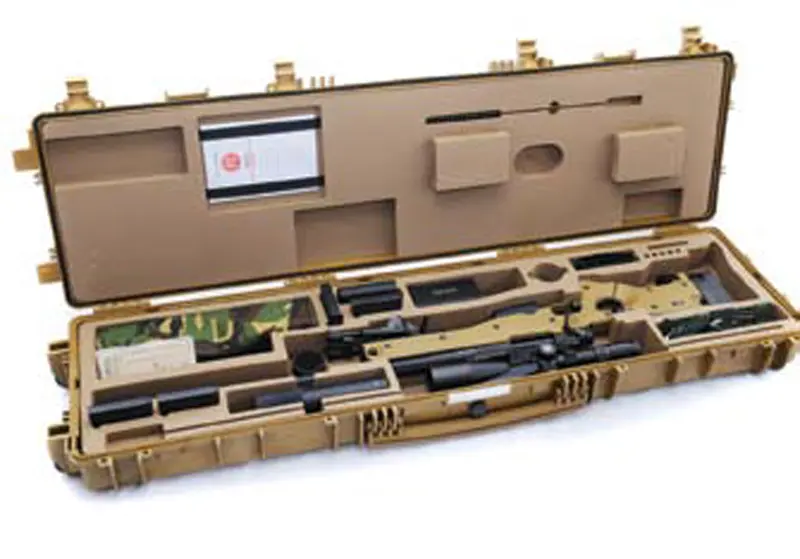
BARREL
The match-grade free-floating barrel is screwed into the action with a 1.5” long thread. This provides a rigid mount and results in consistent cold shot performance. A barrel can be replaced in ten minutes using the barrel change kit, and maintenance can be completed in the field by a trained armorer. All major parts are interchangeable between rifles of the same caliber. The LM barrel is 27 inches long. The barrel has six-groove rifling, with a twist rate of 1:11. The outside of the barrel is fluted along its length, which both reduces the weight and increases stiffness. A threaded muzzle brake is attached to the end of the barrel, which the suppressor can be fitted over.
BONDED ACTION
The proprietary high-grade steel flatbottom action is permanently bonded and bolted to the full-length aluminum chassis. This is superior to the standard traditional bedding interface between actions and stocks, as it has a more rigid construction coupled with a full width machined-in recoil lug, which totally eliminates movement and ensures that zero will be maintained in arduous conditions. An integral Picatinny rail provides a stable base for the AI one-piece sight mount. The stiffness of the full-length aluminum chassis means that any available surface can be used to support the rifle with no effect on accuracy. Its construction makes it impervious to weather.
FOLDING STOCK
The stock can be folded when traveling in vehicles or for parachute insertions. The stock locks in the folded position for security with the avoidance of noise. It is released by pulling firmly on the butt. The wear-compensated hinge ensures total rigidity in the extended position. This option reduces overall length by eight inches when folded and adds 0.4 pounds.
BUTT PAD AND BUTT SPIKE
Each rifle is fitted with an adjustable bolt-on pad together with 0.4- and 0.8- inch spacers. Additional spacers are available to customize the length of pull. The threaded extendable spike enables the user to observe the target area for a prolonged period with minimal fatigue. Designed with quick and fine adjustment features out to 3.2 inches, it retracts flush and out of the way for mobility. The user can fine-tune the position of the aiming reticle of the telescopic sight up or down by adjusting the threaded wheel of the butt spike.
PICATINNY RAIL
The Picatinny rail is permanently pinned, bolted and bonded to the action, providing a standard interface for many optical systems, such as day telescopic sights, night vision equipment, lasers or lights.
TRIGGER ASSEMBLY
The rifle is fitted with a two-stage trigger, which allows a large sear engagement to be maintained until the user takes up the first stage. This reduces the chance of an accidental discharge if the rifle is jolted when cocked. The trigger is adjustable for a trigger pull weight of between 3.3 and 4.4 pounds. The trigger assembly can be easily removed for cleaning by undoing the two socket head cap screws.
SAFETY MECHANISM
A three-position safety mechanism is fitted to the rifle. The first (rear) position blocks the firing pin and locks the bolt in the closed position. The second (middle) position blocks the firing pin but allows the bolt to be operated, so a live round may be removed from the chamber with the weapon in a safe condition. The third (forward) position allows the rifle to be fired and the bolt operated. The safety will only operate when the bolt is cocked.
STOCK
Designed to provide a secure grip and a repeatable shooting position in all conditions, the aluminum chassis is encased in a polymer stock with an adjustable cheek piece. With sights at normal height, this provides a solid position for the user’s cheek. The stock is impervious to all environmental conditions and normal cleaners and lubricants used in small arms maintenance. The stock is issued in flat dark earth, but of course the user can paint the stock to match the terrain conditions in which the rifle will be used.
ADJUSTABLE CHEEK PIECE
The standard adjustable cheek piece adjusts left and right as well as for height to obtain optimal cheek position when using night vision equipment or telescopic sights with large objective lenses.
BOLT
The 0.75-inch diameter steel bolt is combined with vents and a gas shroud. This minimizes the gas blowback in the unlikely event of cartridge case failure. The integral short-throw bolt handle operates with 60° of up and down movement. The large bolt knob lies close to the stock side, just above the trigger to minimize movement of the user’s hand. The bolt can be fieldstripped without tools for cleaning.
SLING FIXING POINTS
Sling attachment points are mounted on each side of the rifle, so that it can be carried flat against the back for security and comfort over rough terrain and long distances or parachute insertions. A Harris adapter is situated below the forend to attach the Harris Bipod as well as a hand stop with a sling loop.
MAGAZINE
The design of the detachable steel magazine is corrosion resistant and low friction for reliable feeding. In .338 Lapua Magnum, the magazine capacity is five rounds. You can color-code additional magazines with colored tape or paint to indicate whether the magazine contains sniper grade match, tracer, incendiary or armor piercing ammunition.
ACCURACY INTERNATIONAL
Accuracy International was formed in 1978 to design and build tactical rifles. The original design ethos combined two factors into a unique package: the incorporation of performance-enhancing features learned in Olympic and International target shooting onto a rifle platform exhibiting full military ruggedness.
The current designs are faithful to the original concept but also benefit from 30 years of continuous improvement. These advances are not cosmetic but rather driven by the needs of users— highly trained military and police units in over 60 countries worldwide.
In addition to the British Army, the Accuracy International Arctic Warfare .338 Lapua Magnum rifle is the first choice for many professional snipers in law enforcement and military units worldwide. Accuracy International is based on the principles of world-class manufacturing, teamwork, mutual respect and trust, with the objective of maintaining their reputation as producers of the “Best Sniper Rifle in the World.”
